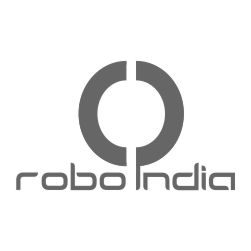Robo India explains tutorial on Introduction of BBC Micro:bit
1. Introduction:
The BBC micro:bit is a pocket-sized computer that you can code, customise and control to bring your digital ideas, games and apps to life.

1.1 Features:
- Size 4cmx5cm, 16 MHz 32-bit ARM Cortex-M0 microcontroller, 256 KB flash memory, 16 KB static RAM.
- Display consisting of 25 LED’s in 5×5 Array.
- Three Push buttons, in which two are programmable and one is System Switch.
- 3-AXIS Accelerometer Sensor, that can detect movements.
- 3-AXIS Magnetometer Sensor, to detect metal and act as compass.
- 2.4GHz Bluetooth Low Energy wireless networking.
- 5 Rings I/O, including (Power)PWR, GND and 3 I/O.
- 23 Pin Edge Connector to connect with other devices like Arduino, Raspberry Pi etc.
- 1 System Yellow LED.
- Micro USB Connector, Battery Connector.
1.2 Function:
The BBC micro:bit is a very simple computer, that accepts input, processes that according to instruction and generates output. The Micro Bit was designed to encourage students to get actively involved in writing software for computers and building new things.
Micro:bit can be connected with computer with a micro USB. Data can be send and received between the micro:bit and computer.
1.3 Application:
The board is designed to be fun and easy to use, users can create anything from games and animations to scrolling stories at school or at home. The Micro:bit is completly programmable. It has a website full of coding languages, lesson plans, tutorials, and fun ideas.
1.4 Development Environment:
There are four official code editors in the BBC micro:bit website:
- CodeKingdoms, using JavaScript;
- Microsoft Block Editor, based on Blockly.
- Microsoft TouchDevelop.
- MicroPython (The version of Python that run on MicroBit).
If you have any query please write us at support@roboindia.com
Thanks and Regards
Content Development Team
Robo India
https://roboindia.com
